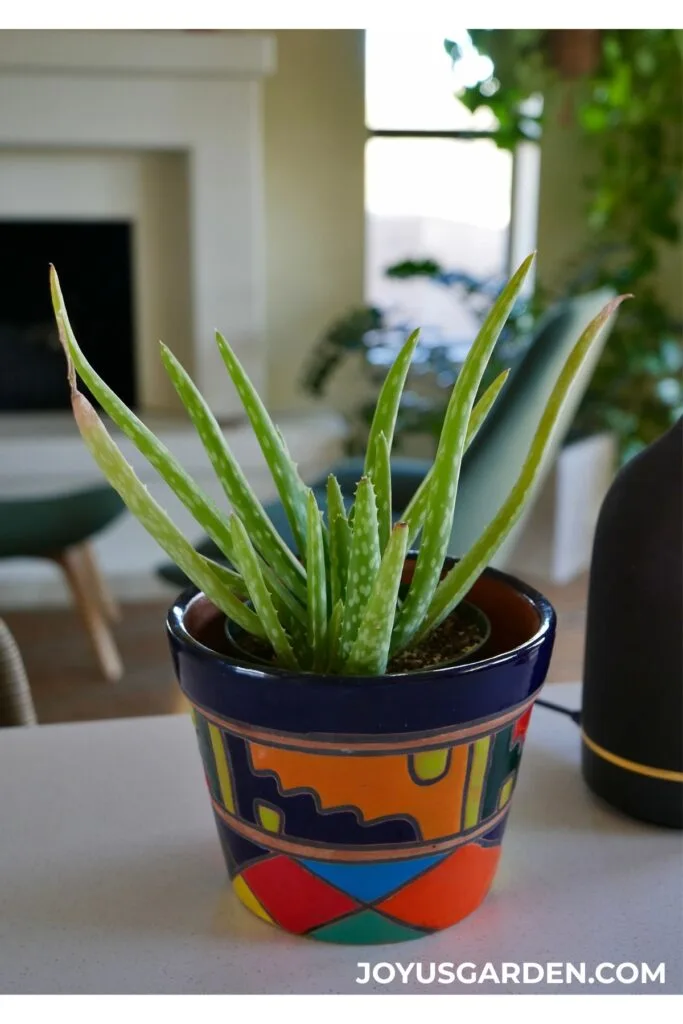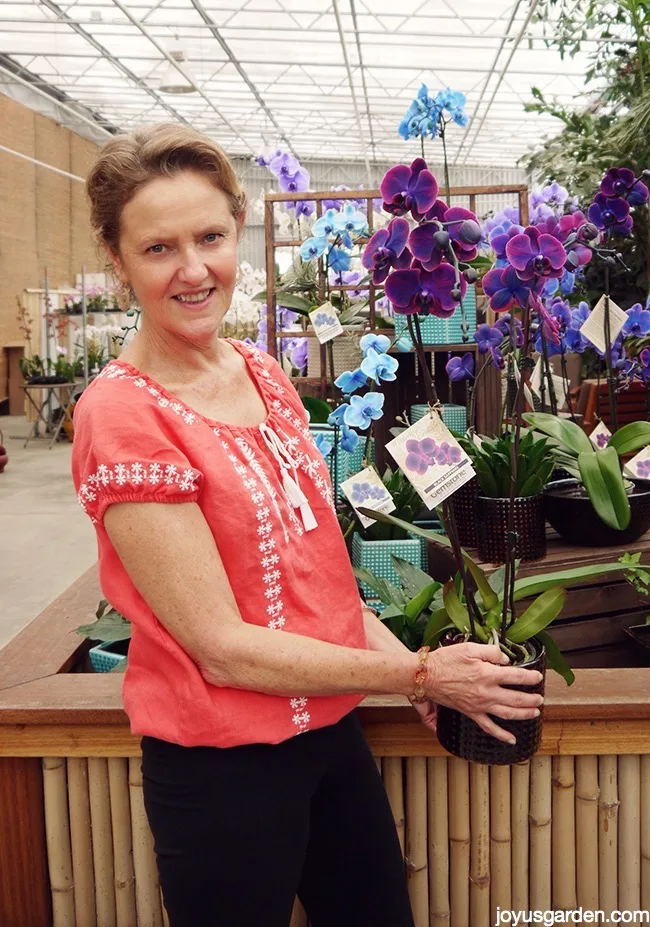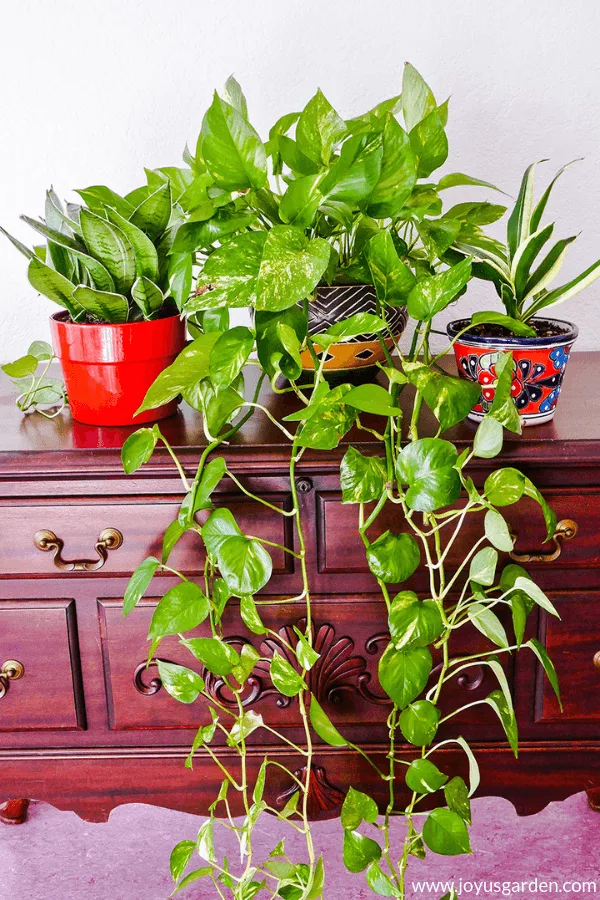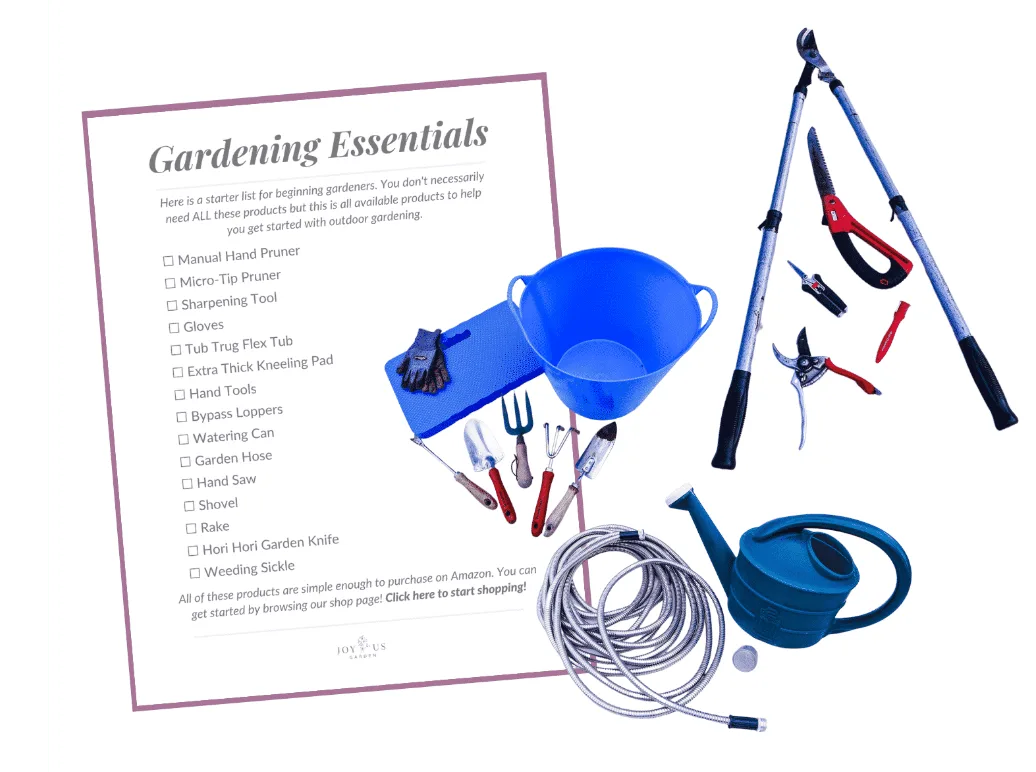Growing Aloe Vera Indoors: Fix These 5 Common Mistakes
Aloe vera is such an attractive and useful succulent plant—why wouldn’t you want one in your home? But if yours isn’t looking so good, don’t worry. Here are 5 common reasons why you might be having trouble growing Aloe vera indoors, along with simple fixes to get it back on track.
Many people struggle with Aloe vera as a houseplant. I could list 15 or 20 reasons why, but that might make things confusing. These 5, in my humble horticultural opinion, are the most common. When it comes to plant care, less is often more—especially if you’re new to houseplants or succulents.

Problems Growing Aloe Vera Indoors
Aloe vera is a popular choice for indoor gardeners because it’s a low-maintenance plant with amazing cosmetic and healing properties—but it still needs proper care to stay healthy and happy.
1. Your Aloe Vera isn’t getting enough light.
Aloe plants love bright, indirect sunlight—they aren’t low-light houseplants. Without enough light, your plant can weaken, and the leaves may crease, bend at the base or in the middle, or grow pale. You might also notice leggy growth as the plant stretches toward the light.
Solution
Place your Aloe plant near a sunny window, but avoid spots with intense, hot sunlight like a direct south or west exposure.
During the cooler, darker winter months, you may need to move your aloe to a brighter spot so it still gets enough light. Rotating your plant every 2–3 months will help it receive light evenly on all sides and prevent it from permanently leaning toward the light source.
While this plant does best in bright natural light, you can also try growing it under artificial light. I grow all my houseplants in natural light, but plant-growing bulbs and online help sources are available.
This post on how much sun succulents need will also help you find the right light for your plants.

2. Your Aloe Vera is getting too much water.
This is probably the most common problem. Aloe vera has plump, fleshy leaves full of gel, and strong, thick roots that store water. Because of this, they’re very susceptible to root rot, especially when grown indoors.
Aloe plants naturally grow in dry conditions and don’t need frequent watering. Soft, brown leaves are a clear sign you’re overwatering—basically, they start to mush. Even if the surface of the soil looks dry, the roots at the bottom may still be wet, which can cause serious problems for your plant.
Solution
Water your Aloe vera only when the soil is about ¾ of the way dry. In the summer, this might be every 2–4 weeks, depending on your plant’s conditions, pot size, and soil mix. During the winter months, cut back on watering even more, since this is a rest period for houseplants.
Make sure your Aloe vera’s pot has at least one drainage hole so excess water can flow out, and avoid letting it sit in a saucer full of water.
These guide to watering succulents indoors will give you more tips. Have questions about Aloe Vera? We answer them here.
3. Your Aloe Vera is planted in the wrong soil mix.
This ties in closely with overwatering. Aloe vera prefers a light, well-aerated soil that yields good drainage. If it’s planted in a heavy mix, like regular potting soil, it’s much more prone to overwatering and root rot. good drainage
Solution
It thrives in a cactus and succulent soil blend, which allows excess water to flow through and keeps the roots well-aerated. Do this during the growing season, and make sure the pot—whether new or existing—has drainage holes at the bottom.
If you want to make your own, here’s a DIY succulent & cactus soil recipe that I use for all my succulents. You can also find ready-made options at local garden centers, big box stores, or online.
For more guidance, check out this post on planting aloe vera in containers and this one on repotting indoor succulents. Both cover soil mix, too.
They’re tinged with orange/brown because this pic was taken in early March after a winter with a few nights in the high 20’s. Plants change color in response to environmental stress. They greened right back up once the evening temps warmed.
4. Your Aloe Vera is located in a hot window.
Even though most succulents love bright light, being pressed right up against hot glass can burn your aloe’s leaves. Because they hold so much water, Aloe vera leaves are especially prone to sunburn.
If you notice large brown patches or the leaves turning orange or brown, it’s a sign your plant is getting too much direct sun.
Solution
Move your plant out of a hot, west or south-facing window. A bright south- or west-facing room is fine—just give it a little distance from the glass, about 3 to 5′. My Aloe vera grows in a north-facing window here in sunny Tucson, and it does just fine—proof that they don’t need to bake in the sun to be happy!
Here are 6 important tips to growing succulents indoors.

5. The Aloe Vera plant was stressed when you bought it.
I’ve seen Aloe vera plants for sale indoors at places like Lowe’s and Home Depot sitting in low light. There’s a good chance they’ve been either overwatered or underwatered, depending on how long they’ve been on the shelf. Many of you shop at Trader Joe’s, and the same thing applies there—Aloe veras are often crammed on shelves wrapped in plastic sleeves.
Being kept too wet, too dry, or in low light can stress a plant over time (and that can happen faster than you’d think). If it’s been struggling too long, it might not fully recover once you bring it home.
Solution
Look the plants over carefully and choose the healthiest one you can find. I always slip the sleeves off to inspect them (and of course, put them back on if I don’t buy one). If the leaves are mushy, yellow, spotted, or bending, it’s best to pass that plant by and look for one with firm, upright, green leaves.
Once you bring your new Aloe plant home, give it some time to adjust—place it in bright light and go easy on the water.
Here’s our Aloe Vera 101 Guide if you’d like to dive in a little deeper. In this roundup, you’ll find tips on growing Aloe vera indoors and outdoors; how to remove, plant, and care for the pups (those cute baby plants that grow at the base); planting aloe vera in containers; aloe vera faqs; plus how I use and store Aloe vera leaves.
Video Guide
Growing Aloe Vera FAQs
Can Aloe vera survive in a small pot, or does it need to be repotted often?
Yes, Aloe vera can stay in the same pot for quite a while, especially when grown indoors. They actually like being a little tight in their pot. Eventually, it’ll need a new pot with more room to accommodate its strong, spreading root system. I usually repot mine every 4–6 years, depending on how they’re growing.
Why are some Aloe vera leaves turning yellow or shriveling even when I’m watering correctly?
It’s hard to say without knowing the exact conditions, but plants often change color or texture when they’re stressed. A few common reasons are too much sun, too much water, or too little water. If your Aloe’s leaves are shriveled and dry, it’s likely not getting enough water. If they’re soft and mushy, you’re probably watering too much.
What pests should I watch for on indoor Aloe vera, like mealybugs, and how do I deal with them?
Mealybugs are the most common pests to infest succulents grown indoors—at least in my home! They look like specks of cotton. If the infestation isn’t too bad, wipe them off with a cotton swab dipped in a 50/50 mix of rubbing alcohol and water. They tend to hide on the undersides of leaves and in crevices, so inspect your plant closely from time to time.
If you prefer to spray, insecticidal soap is a good option. Aloes can also be prone to scale and aphids, which the soap will take care of too. As with any pest, get it under control as soon as you spot it—they can multiply like crazy!

Does Aloe Vera Grow Outdoors As Well As Indoors?
Yes, depending on your climate zone. I live in Tucson (zone 9b) and grow Aloe vera outdoors year-round in a large pot. When I lived in Santa Barbara (zone 10b), I did the same. I’ve also grown it as a houseplant in New York City, San Francisco, and now again here in Tucson.
As you’d expect, Aloe vera grows much faster outdoors—especially here in Tucson, where mine is in bright shade, protected from full sun. My plant has produced plenty of pups and the pot is crammed tight!
Even if you live in a climate with cold winters, your Aloe vera will love spending summer outdoors. Just protect it from strong sun or heavy rain, and and bring it back inside when nighttime temps drop below 40°F.
In a nutshell: Don’t overthink caring for your indoor Aloe vera plant. The main reasons it struggles indoors are lack of light, too much water, and not using well-drained soil. This great plant is low-maintenance, packed with medicinal properties, and thrives when given the right conditions—truly a plant with a purpose!
Happy gardening,








My Aloe plants tend to get brown on the tips and then not gown much more. Any thoughts?
Hi Gerald – Mine get brown tips due to the dry air here in the desert. Another reason is lack of water at some point. Nell
my aloe vera plant isn’t getting any bigger, but a new one is coming in beside it. why isn’t my plant getting any bigger